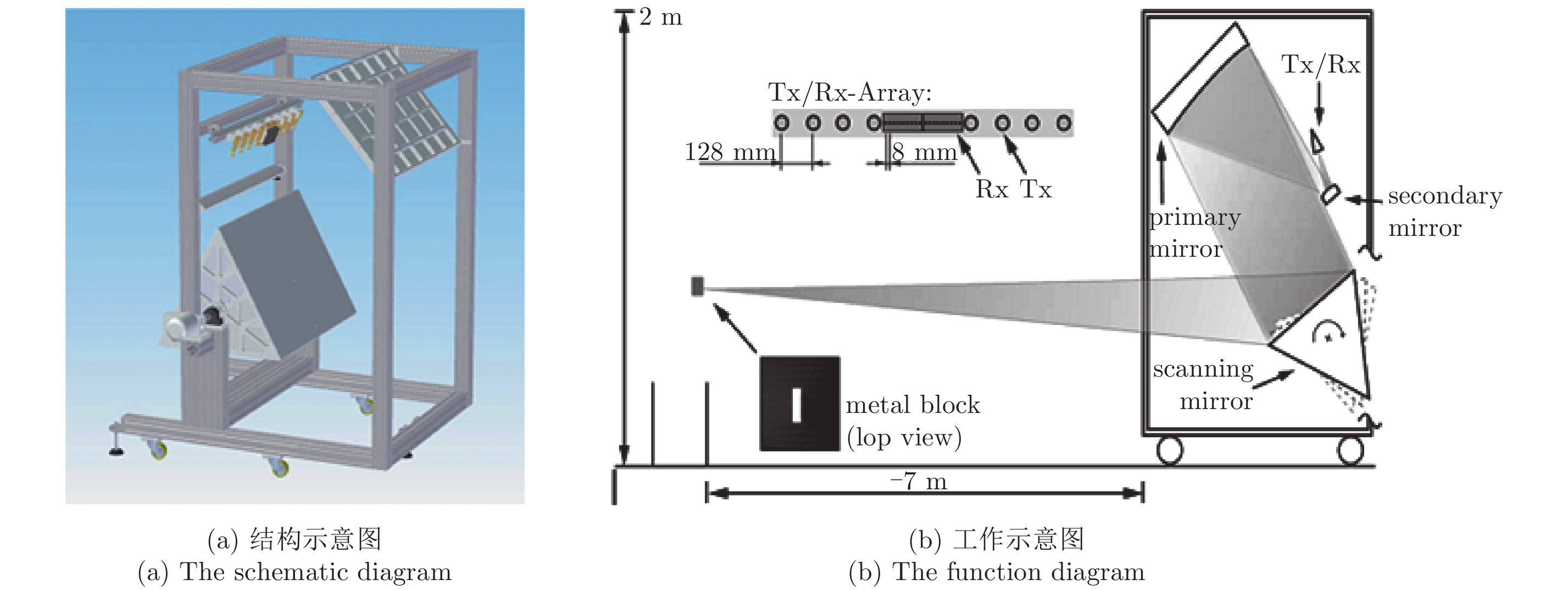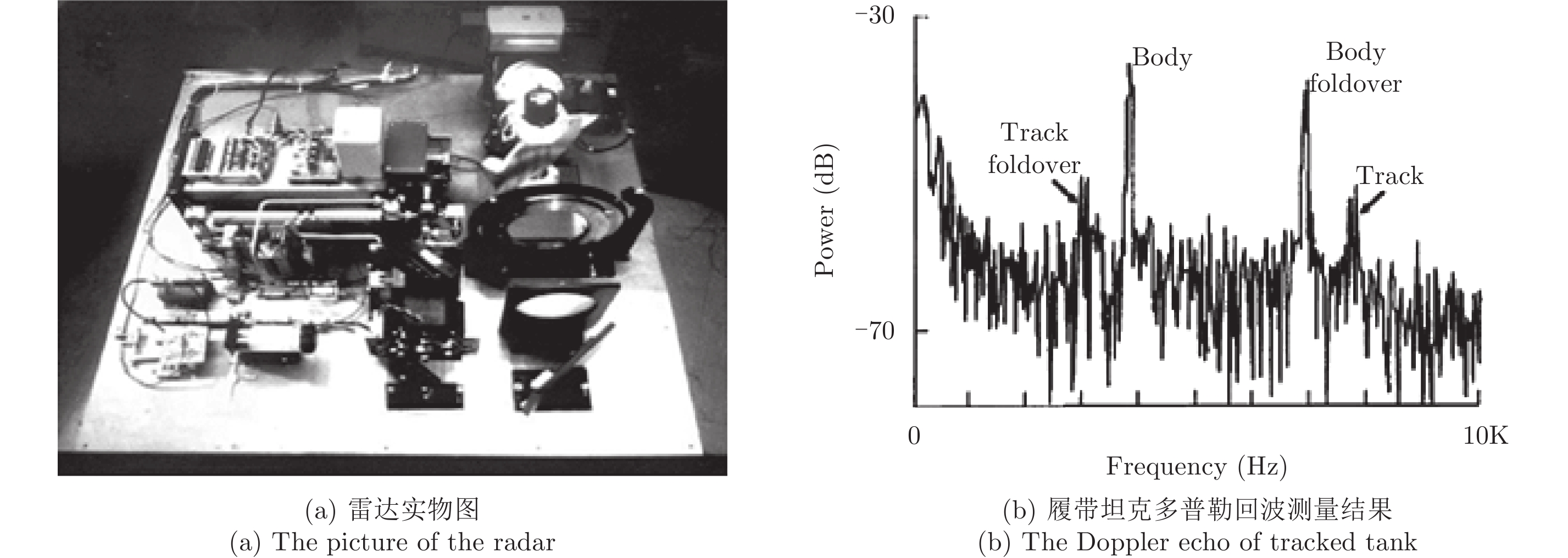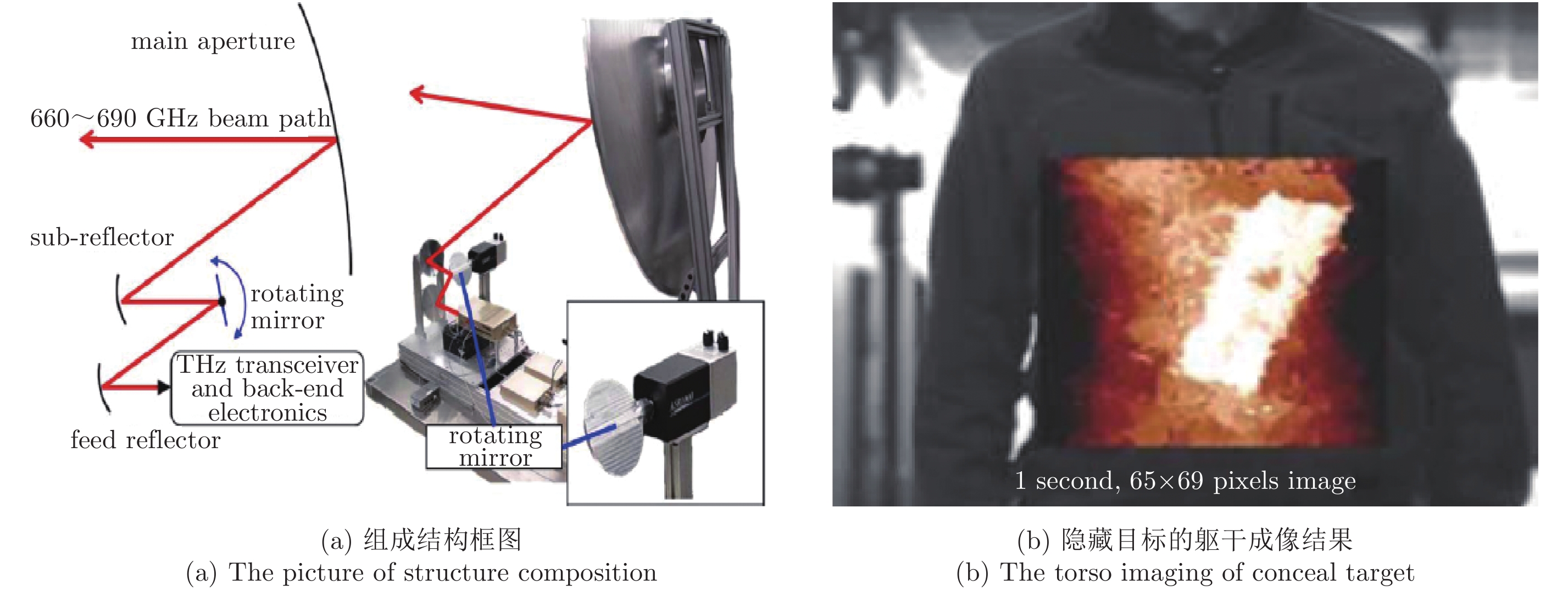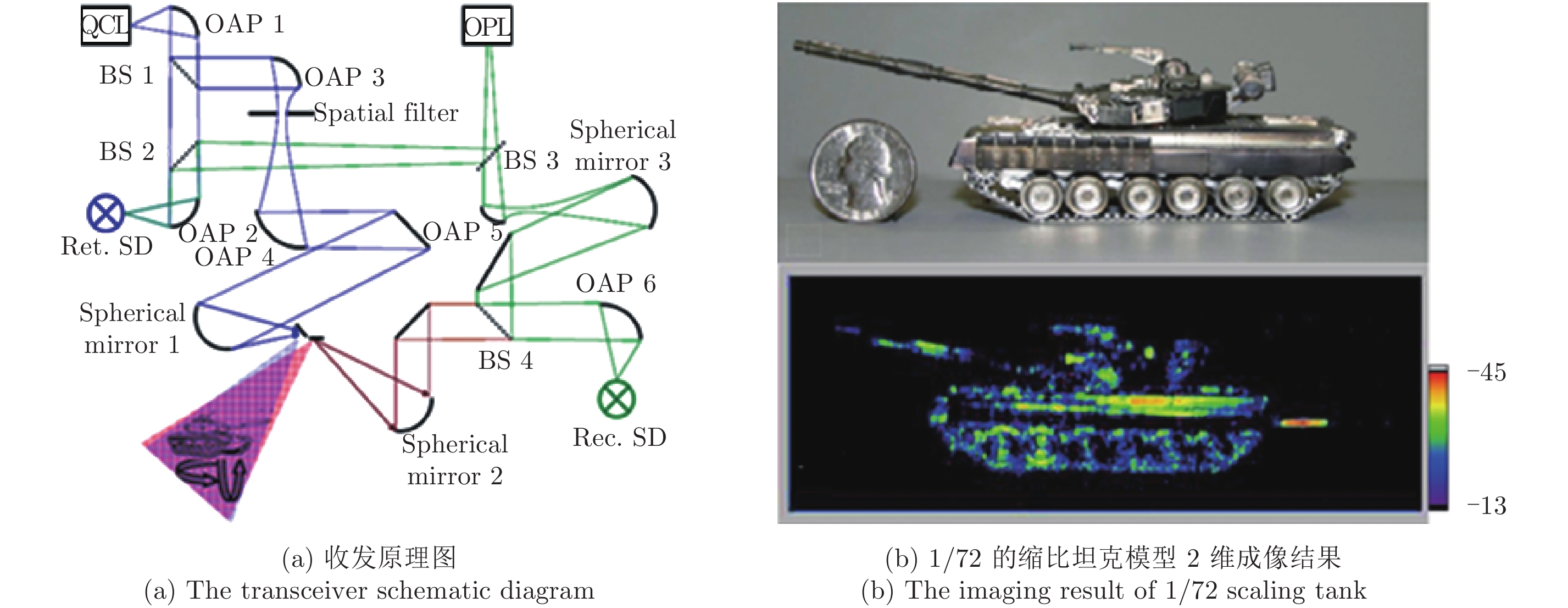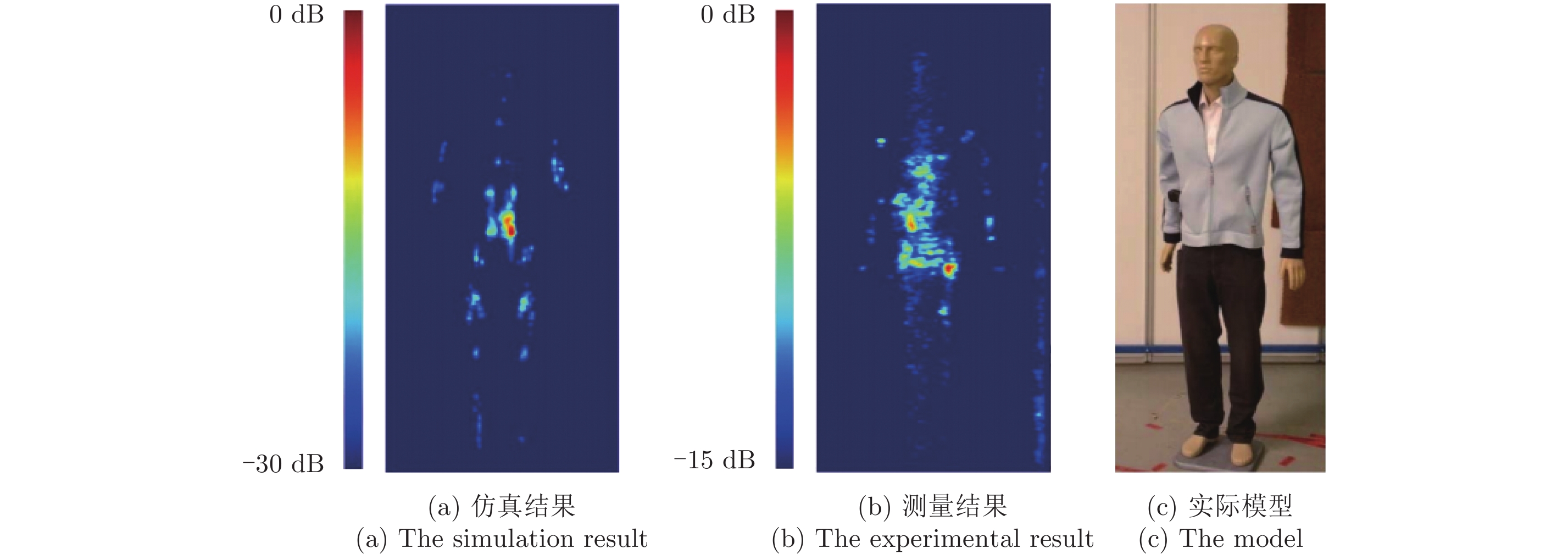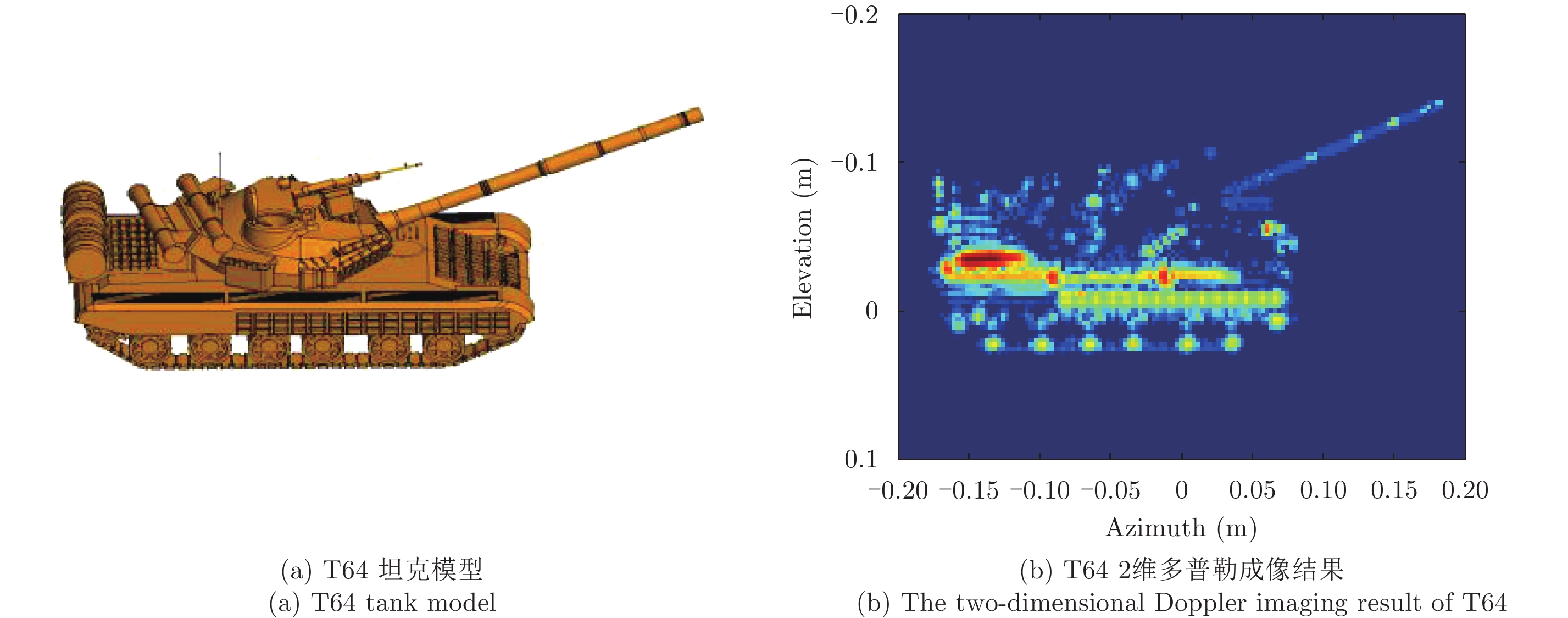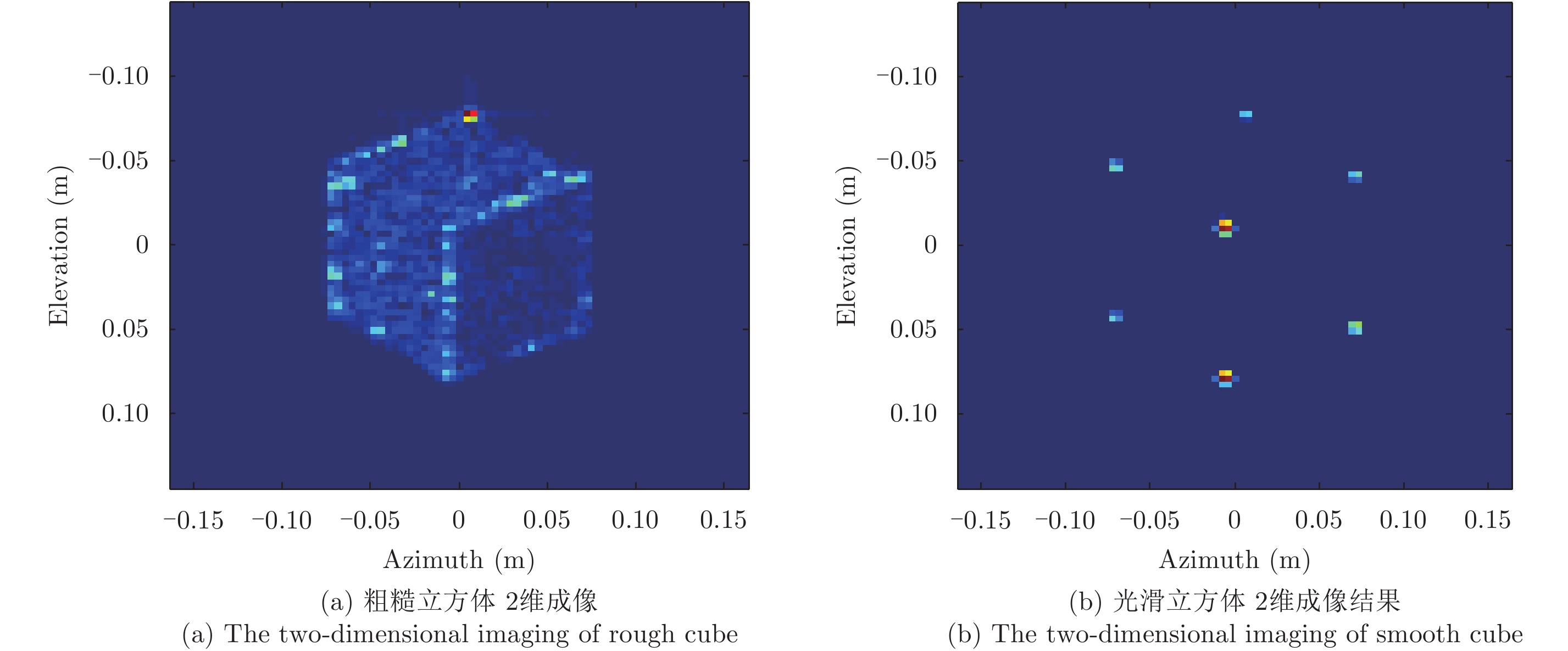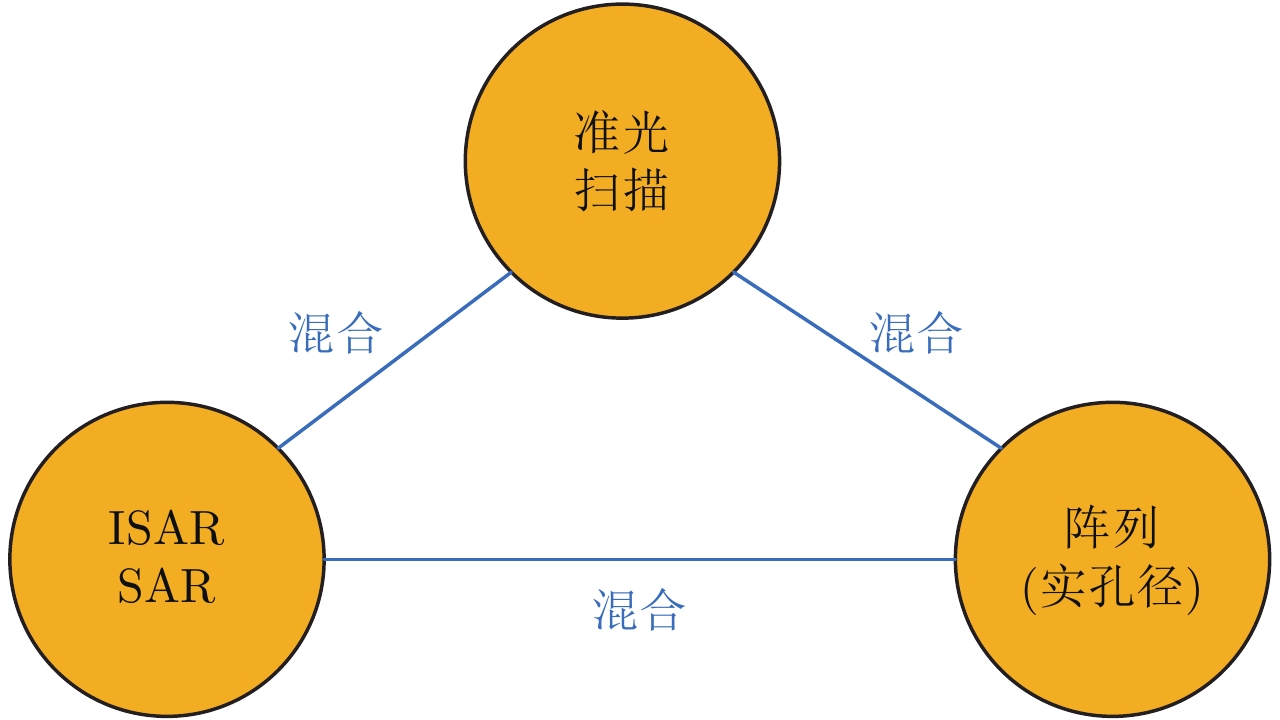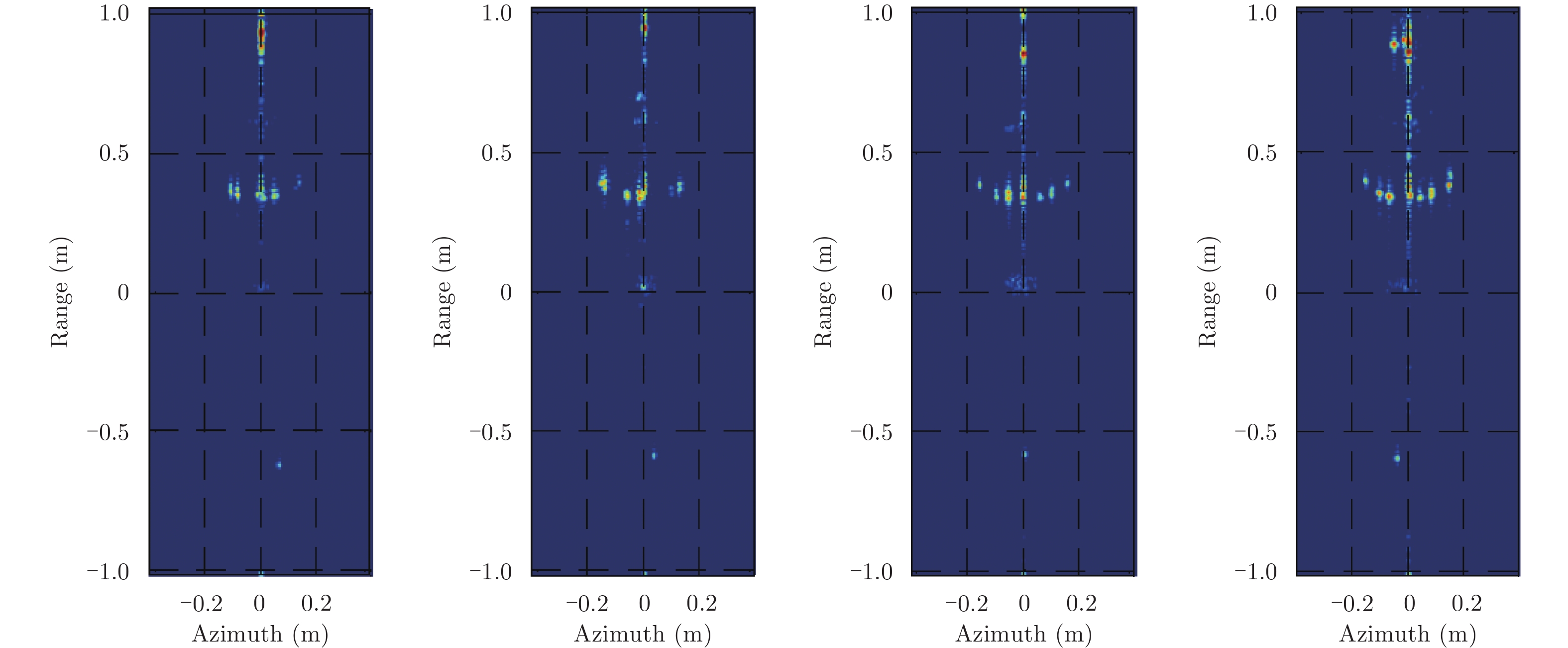| [1] |
Nichols E F and Tear J D. Joining the infrared and electric wave spectra[J]. Astrophysics Journal, 1925, 61: 17–37. DOI: 10.1086/142871 |
| [2] |
Wiltse J C. History of millimeter and submillimeter waves[J]. IEEE Transactions on Microwave Theory and Techniques, 1984, 32(9): 1118–1127. DOI: 10.1109/TMTT.1984.1132823 |
| [3] |
Mcintosh R E, Narayanan R M, Mead J B, et al. Design and performance of a 215 GHz pulsed radar system[J]. IEEE Transactions on Microwave Theory and Techniques, 1988, 36(6): 994–1001. DOI: 10.1109/22.3624 |
| [4] |
Siegel P H. Terahertz technology[J]. IEEE Transactions on Microwave Theory and Techniques, 2002, 50(3): 910–928. DOI: 10.1109/22.989974 |
| [5] |
Horiuchi N. Terahertz technology: Endless applications[J]. Nature Photonics, 2010, 4(3): 140. DOI: 10.1038/nphoton.2010.16 |
| [6] |
Albrecht J D. THz electronics: Transistors, TMICs, and high power amplifiers[C]. Proceedings of 2011 International Conference on Compound Semiconductor Manufacturing Technology, California, USA, 2011.
|
| [7] |
Wallace H B. Video synthetic aperture radar (ViSAR)[R]. Arlington: DARPA, 2012.
|
| [8] |
Advanced scanning technology for imaging radars (ASTIR)[R]. Arlington: DARPA, 2014.
|
| [9] |
Alexander N E, Alderman B, Allona F, et al.. Terascreen: Multi-frequency multi-mode terahertz screening for border checks[C]. Proceedings of the SPIE 9078, Passive and Active Millimeter-Wave Imaging XVII SPIE, Baltimore, Maryland, United States, 2014: 907802.
|
| [10] |
Appleby R and Wallace H B. Standoff detection of weapons and contraband in the 100 GHz to 1 THz region[J]. IEEE Transactions on Antennas and Propagation, 2007, 55(11): 2944–2956. DOI: 10.1109/TAP.2007.908543 |
| [11] |
Di Carlo A, Paoloni C, Brunetti F, et al.. The European project OPTHER for the development of a THz tube amplifier[C]. Proceedings of IEEE International Vacuum Electronics Conference, Rome, 2009: 100–101.
|
| [12] |
Nagatsuma T. Exploring sub-terahertz waves for future wireless communications[C]. Proceedings of the Joint 31st International Conference on Infrared Millimeter Waves and 14th International Conference on Teraherz Electronics, Shanghai, 2006: 4.
|
| [13] |
Crowe T W, Hesler J L, Bishop W L, et al.. Integrated GaAs diode technology for millimeter and submillimeter-wave components and systems[C]. MRS Spring Meeting, San Francisco, 2000: 631.
|
| [14] |
Crowe T W, Bishop W L, Porterfield D W, et al. Opening the terahertz window with integrated diode circuits[J]. IEEE Journal of Solid-State Circuits, 2005, 40(10): 2104–2110. DOI: 10.1109/JSSC.2005.854599 |
| [15] |
Cooper K B, Dengler R J, Chattopadhyay G, et al. A high-resolution imaging radar at 580 GHz[J]. IEEE Microwave and Wireless Components Letters, 2008, 18(1): 64–66. DOI: 10.1109/LMWC.2007.912049 |
| [16] |
Essen H, Hagelen M, Johannes W, et al.. High resolution millimetre wave measurement radars for ground based SAR and ISAR imaging[C]. Proceedings of IEEE Radar Conference, Rome, 2008: 1–5.
|
| [17] |
Essen H, Wahlen A, Sommer R, et al. High-bandwidth 220 GHz experimental radar[J]. Electronics Letters, 2007, 43(20): 1114–1116. DOI: 10.1049/el:20071865 |
| [18] |
Stanko S, Palm S, Sommer R, et al.. Millimeter resolution SAR imaging of infrastructure in the lower THz region using MIRANDA-300[C]. Proceedings of the 2016 46th European Microwave Conference, London, 2016: 1505–1508. DOI: 10.1109/EuMC.2016.7824641. |
| [19] |
Dahlbäck R, Rubaek T, Bryllert T, et al.. A 340 GHz CW non-linear imaging system[C]. Proceedings of the 35th International Conference on Infrared Millimeter and Terahertz Waves, Rome, 2010: 1–2.
|
| [20] |
Cheng B B, Jiang G, Wang C, et al. Real-time imaging with a 140 GHz inverse synthetic aperture radar[J]. IEEE Transactions on Terahertz Science and Technology, 2013, 3(5): 594–605. DOI: 10.1109/TTHZ.2013.2268317 |
| [21] |
成彬彬, 江舸, 陈鹏, 等. 0.67 THz高分辨力成像雷达[J]. 太赫兹科学与电子信息学报, 2013, 11(1): 7–11
Cheng Bin-bin, Jiang Ge, Chen Peng, et al. 0.67 THz high resolution imaging radar[J]. Journal of Terahertz Science and Electronic Information Technology, 2013, 11(1): 7–11
|
| [22] |
Gu S M, Li C, Gao X, et al. Three-dimensional image reconstruction of targets under the illumination of terahertz Gaussian beam-theory and experiment[J]. IEEE Transactions on Geoscience and Remote Sensing, 2013, 51(4): 2241–2249. DOI: 10.1109/TGRS.2012.2209892 |
| [23] |
Cooper K B. Performance of a 340 GHz radar transceiver array for standoff security imaging[C]. Proceedings of the 2014 39th International Conference on Infrared, Millimeter, and Terahertz Waves, Tucson, AZ, 2014. DOI: 10.1109/IRMMW-THz.2014.6956020. |
| [24] |
Friederich F, von Spiegel W, Bauer M, et al.. THz Active Imaging Systems with Real-Time Capabilities[M]//Corsi C and Sizov F. THz and Security Applications. Dordrecht, Netherlands: Springer, 2014: 183–200.
|
| [25] |
Moll J, Schops P, and Krozer V. Towards three-dimensional millimeter-wave radar with the bistatic fast-factorized back-projection algorithm-potential and limitations[J]. IEEE Transactions on Terahertz Science and Technology, 2012, 2(4): 432–440. DOI: 10.1109/TTHZ.2012.2199113 |
| [26] |
Keil A, Hoyer T, Peuser J, et al.. All-electronic 3D THz synthetic reconstruction imaging system[C]. Proceedings of the 2011 36th International Conference on Infrared, Millimeter and Terahertz Waves, Houston, TX, 2011: 1–2.
|
| [27] |
Mcmillan R W, Trussell C W, Bohlander R A, et al. An experimental 225 GHz pulsed coherent radar[J]. IEEE Transactions on Microwave Theory and Techniques, 1991, 39(3): 555–562. DOI: 10.1109/22.75300 |
| [28] |
Chattopadhayay G, Lee C, Jung C, et al.. Integrated arrays on silicon at terahertz frequencies[C]. Proceedings of 2011 IEEE International Symposium on Antennas and Propagation, Spokane, WA, 2011: 3007–3010.
|
| [29] |
Cooper K B, Dengler R J, Llombart N, et al. Penetrating 3-D imaging at 4-and 25-m range using a submillimeter-wave radar[J]. IEEE Transactions on Microwave Theory and Techniques, 2008, 56(12): 2771–2778. DOI: 10.1109/TMTT.2008.2007081 |
| [30] |
Cooper K B, Dengler R J, Llombart N, et al. THz imaging radar for standoff personnel screening[J]. IEEE Transactions on Terahertz Science and Technology, 2011, 1(1): 169–182. DOI: 10.1109/TTHZ.2011.2159556 |
| [31] |
Llombart N, Cooper K B, Dengler R J, et al. Time-delay multiplexing of two beams in a terahertz imaging radar[J]. IEEE Transactions on Microwave Theory and Techniques, 2010, 58(7): 1999–2007. DOI: 10.1109/TMTT.2010.2050106 |
| [32] |
Furqan M, Ahmed F, Feger R, et al.. A 120-GHz wideband FMCW radar demonstrator based on a fully-integrated sige transceiver with antenna-in-package[C]. Proceedings of 2016 IEEE MTT-S International Conference on Microwaves for Intelligent Mobility, San Diego, CA, 2016: 1–4.
|
| [33] |
Jahn M, Hamidipour A, Tong Z, et al.. A 120-GHz FMCW radar frontend demonstrator based on a SiGe chipset[C]. Proceedings of the 2011 41st European Microwave Conference, Manchester, 2011: 309–315.
|
| [34] |
Göttel B, Pauli M, Gulan H, et al.. Miniaturized 122 GHz short range radar sensor with antenna-in-package (AiP) and dielectric lens[C]. Proceedings of the 2014 8th European Conference on Antennas and Propagation, The Hague, 2014: 709–713.
|
| [35] |
Yuan S and Schumacher H. 110–140-GHz single-chip reconfigurable radar frontend with on-chip antenna[C]. Proceedings of 2015 IEEE Bipolar/BiCMOS Circuits and Technology Meeting-BCTM, Boston, MA, 2015: 48–51.
|
| [36] |
Jaeschke T, Bredendiek C, and Pohl N. A 240 GHz ultra-wideband FMCW radar system with on-chip antennas for high resolution radar imaging[C]. Proceedings of 2013 IEEE MTT-S International Microwave Symposium Digest, Seattle, WA, 2014: 1–4.
|
| [37] |
Statnikov K, Sarmah N, Grzyb J, et al.. A 240 GHz circular polarized FMCW radar based on a sige transceiver with a lens-integrated on-chip antenna[C]. Proceedings of the 2014 11th European Radar Conference, Rome, 2014: 447–450.
|
| [38] |
Goyette T M, Dickinson J C, Waldman J, et al.. 1.56-THz compact radar range for w-band imagery of scale-model tactical targets[C]. Proceedings of the SPIE 4053, Algorithms for Synthetic Aperture Radar Imagery VII, Orlando, FL, United States, 2000: 615–622.
|
| [39] |
Coulombe M J, Horgan T, Waldman J, et al.. A 160 GHz polarimetric compact range for scale model RCS measurements[C]. Proceedings of Antenna Measurements and Techniques Association Proceedings, Seattle, WA, 2007.
|
| [40] |
DeMartinis G B, Coulombe M J, Horgan T M, et al.. A 240 GHz polarimetric compact range for scale model RCS measurements[J]. Japanese Journal of Clinical Medicine, 2010, 28.
|
| [41] |
Coulombe M J, Ferdinand T, Horgan T, et al.. A 585 GHz compact range for scale model RCS measurements[C]. Proceedings of Antenna Measurements and Techniques Association, Dallas, TX, 1993.
|
| [42] |
Goyette T M, Dickinson J C, Gorveatt J W, et al.. X-band ISAR imagery of scale-model tactical targets using a wide-bandwidth 350-GHz compact range[C]. Proceedings of the SPIE 5427, Algorithms for Synthetic Aperture Radar Imagery XI, Orlando, Florida, United States, 2004: 227–236.
|
| [43] |
Liang Da-chuan, Wei Ming-gui, Gu Jian-qiang, et al. Broad-band time domain terahertz radar cross-section research in scale models[J]. Acta Physica Sinica, 2014, 63(21): 85–94. DOI: 10.7498/aps.63.214102 |
| [44] |
Danylov A A, Goyette T M, Waldman J, et al.. Coherent imaging at 2.4 THz with a CW quantum cascade laser transmitter[C]. Proceedings of the SPIE 7601, Terahertz Technology and Applications III, San Francisco, California, United States, 2010, 7601: 760105.
|
| [45] |
Danylov A A, Goyette T M, Waldman J, et al. Terahertz inverse synthetic aperture radar (ISAR) imaging with a quantum cascade laser transmitter[J]. Optics Express, 2010, 18(15): 16264–16272. DOI: 10.1364/OE.18.016264 |
| [46] |
Lloyd-Hughes J and Jeon T I. A review of the terahertz conductivity of bulk and nano-materials[J]. Journal of Infrared, Millimeter, and Terahertz Waves, 2012, 33(9): 871–925. DOI: 10.1007/s10762-012-9905-y |
| [47] |
Grosso G and Parravicini G P. Solid State Physics[M]. Second Edition, New York: Academic Press, 2014.
|
| [48] |
Li L S and Yin H C. Fano-like resonance in cylinders including nonlocal effects[J]. Chinese Physics Letters, 2014, 31(8): 087302. DOI: 10.1088/0256-307X/31/8/087302 |
| [49] |
Andersh D J, Hazlett M, Lee S W, et al. Xpatch: A high frequency electromagnetic-scattering prediction code and environment for complex 3D objects[J]. Science, 1994, 286(5448): 2249–2250.
|
| [50] |
Goyette T M, Dickinson J C, Waldman J, et al.. Fully polarimetric W-band ISAR imagery of scale-model tactical targets using a 1.56-THz compact range[C]. Proceedings of the SPIE 4382, Algorithms for Synthetic Aperture Radar Imagery VIII, Orlando, FL, United States, 2001: 229–240.
|
| [51] |
Jagannathan A, Gatesman A J, and Giles R H. Characterization of roughness parameters of metallic surfaces using terahertz reflection spectra[J]. Optics Letters, 2009, 34(13): 1927–1929. DOI: 10.1364/OL.34.001927 |
| [52] |
Zurk L M, Orlowski B, Sundberg G, et al.. Electromagnetic scattering calculations for terahertz sensing[C]. Proceedings of the PSIE 6472, Terahertz and Gigahertz Electronics and Photonics VI, San Jose, California, United States, 2007: 64720A.
|
| [53] |
Jansen C, Priebe S, Moller C, et al. Diffuse scattering from rough surfaces in THz communication channels[J]. IEEE Transactions on Terahertz Science and Technology, 2011, 1(2): 462–472. DOI: 10.1109/TTHZ.2011.2153610 |
| [54] |
Pätzold M, Kahl M, Klinkert T, et al. Simulation and data-processing framework for hybrid synthetic aperture THz systems including THz-scattering[J]. IEEE Transactions on Terahertz Science and Technology, 2013, 3(5): 625–634. DOI: 10.1109/TTHZ.2013.2274698 |
| [55] |
Li Z, Cui T J, Zhong X J, et al. Electromagnetic scattering characteristics of PEC targets in the terahertz regime[J]. IEEE Antennas and Propagation Magazine, 2009, 51(1): 39–50. DOI: 10.1109/MAP.2009.4939018 |
| [56] |
Wang R J, Wang H Q, Deng B, et al. High-resolution terahertz radar imaging based on electromagnetic calculation data[J]. Journal of Infrared and Millimeter Waves, 2014, 33(6): 577–583.
|
| [57] |
Li C C, Deng B, Qin Y L, et al.. RCS prediction of planar slotted waveguide array antenna in terahertz regime[C]. Proceedings of the 2012 37th International Conference on Infrared, Millimeter, and Terahertz Waves, Wollongong, NSW, 2012: 1–2.
|
| [58] |
Li Chun-chun, Deng Bin, Wang Hong-qiang, et al. Radar scattering characteristics of parabolic reflector antenna targets in the terahertz regime[J]. Laser& Infrared, 2013, 43(6): 671–677. DOI: 10.3969/j.issn.1001-5078.2013.06.017 |
| [59] |
Gao Jing-kun, Wang Rui-jun, Deng Bin, et al. Characteristics of polarized imaging of a conducting cone with surface roughness at Terahertz frequencies[J]. Journal of Terahertz Science and Electronic Information Technology, 2015, 13(3): 401–408. DOI: 10.11805/TKYDA20150310.401 |
| [60] |
Wang Rui-jun, Deng Bin, Wang Hong-qiang, et al. Scattering characteristics for cylindrical conductor with different surface micro-structure in terahertz regime[J]. High Power Laser and Particle Beams, 2013, 25(6): 1549–1554. DOI: 10.3788/HPLPB20132506.1549 |
| [61] |
Gao J K, Wang R J, Deng B, et al. Electromagnetic scattering characteristics of rough PEC targets in the terahertz regime[J]. IEEE Antennas and Wireless Propagation Letters, 2016, 16: 975–978.
|
| [62] |
Wang Rui-jun, Deng Bin, Wang Hong-qiang, et al. Electromagnetic scattering characteristic of aluminous targets in the terahertz and far infrared region[J]. Acta Physica Sinica, 2014, 63(13): 134102. DOI: 10.7498/aps.63.134102 |
| [63] |
Wang H Q, Wang R J, Deng B, et al. Compressed sensing of terahertz radar azimuth-elevation imaging[J]. Journal of Electronic Imaging, 2015, 24(1): 13035. DOI: 10.1117/1.JEI.24.1.013035 |
| [64] |
Li H Y, Li Q, Xia Z W, et al. Influence of Gaussian beam on terahertz radar cross section of a conducting sphere[J]. Journal of Infrared, Millimeter, and Terahertz Waves, 2013, 34(1): 88–96. DOI: 10.1007/s10762-012-9950-6 |
| [65] |
Li H Y, Li Q, She J Y, et al. Radar cross section of a semicircular bossresearch into influence of Gaussian beam on terahertz radar cross section of a semicircular boss[J]. Journal of Infrared,Millimeter,and Terahertz Waves, 2013, 34(7/8): 480–487.
|
| [66] |
Li H Y, Li Q, Xue K, et al. Research into influence of Gaussian beam on terahertz radar cross section of a conducting cylinder[J]. Journal of Infrared,Millimeter,and Terahertz Waves, 2013, 34(3/4): 289–298.
|
| [67] |
Liu H B, Zhong H, Karpowicz N, et al. Terahertz spectroscopy and imaging for defense and security applications[J]. Proceedings of the IEEE, 2007, 95(8): 1514–1527. DOI: 10.1109/JPROC.2007.898903 |
| [68] |
Henry S C, Schecklman S, Kniffin G P, et al.. Measurement and modeling of rough surface effects on terahertz spectroscopy[C]. Proceedings of the SPIE 7601, Terahertz Technology and Applications III, San Francisco, California, United States, 2010: 760108.
|
| [69] |
Arbab M H, Winebrenner D P, Thorsos E I, et al. Retrieval of terahertz spectroscopic signatures in the presence of rough surface scattering using wavelet methods[J]. Applied Physics Letters, 2010, 97(18): 181903. DOI: 10.1063/1.3507384 |
| [70] |
Caris M, Stanko S, Palm S, et al.. 300 GHz radar for high resolution SAR and ISAR applications[C]. Proceedings of the 2015 16th International Radar Symposium, Dresden, 2015: 577–580.
|
| [71] |
Palm S, Sommer R, Caris M, et al.. Ultra-high resolution SAR in lower terahertz domain for applications in mobile mapping[C]. Proceedings of 2016 German Microwave Conference, Bochum, 2016: 205–208.
|
| [72] |
Zhang B, Pi Y M, and Li J. Terahertz imaging radar with inverse aperture synthesis techniques: System structure, signal processing, and experiment results[J]. IEEE Sensors Journal, 2015, 15(1): 290–299. DOI: 10.1109/JSEN.2014.2342495 |
| [73] |
Demartinis G B, Goyette T M, Coulombe M J, et al.. A 1.56 THz spot scanning radar range for fully polarimetric w-band scale model measurements[R]. University of Massachusetts Lowell, 1999.
|
| [74] |
Wang R J, Deng B, Qin Y L, et al. Bistatic terahertz radar azimuth-elevation imaging based on compressed sensing[J]. IEEE Transactions on Terahertz Science and Technology, 2014, 6(4): 702–713.
|
| [75] |
Yang Q, Deng B, Wang H Q, et al. Experimental research on imaging of precession targets with THz radar[J]. Electronics Letters, 2016, 52(25): 2059–2061. DOI: 10.1049/el.2016.3494 |
| [76] |
Yang Q, Deng B, Wang H Q, et al.. Research on imaging of precession targets based on range-instantaneous Doppler in the terahertz band[C]. Proceedings of 2017 International Workshop on Electromagnetics: Applications and Student Innovation Competition, London UK, 2017: 14–15.
|
| [77] |
Li Jin, Pi Yi-ming, and Yang Xiao-bo. Spaceborne imaging radar system based on gyrotron in terahertz band design and simulation[J]. Journal of Electronic Measurement and Instrument, 2010, 24(10): 892–898. DOI: 10.3724/SP.J.1187.2010.00892 |
| [78] |
李晋. 太赫兹雷达系统总体与信号处理方法研究[D]. [博士论文], 电子科技大学, 2010.
Li Jin. Research on terahertz radar system and its signal processing[D]. [Ph.D. dissertation], University of Electronic Science and Technology of China, 2010.
|
| [79] |
Lin Hua. Analysis and simulation of UAV terahertz wave synthetic aperture radar imaging[J]. Information and Electronic Engineering, 2010, 8(4): 373–377, 382. DOI: 10.3969/j.issn.1672-2892.2010.04.001 |
| [80] |
Darpa’s ViSAR radar completes testing[EB/OL]. http://www.abovetopsecret.com/forum/thread/1186879/pg1?from=singlemessage#lastPost, 2017.
|
| [81] |
沈斌. THz频段SAR成像及微多普勒目标检测与分离技术研究[D]. [硕士论文], 电子科技大学, 2008.
Shen Bin. THz wave SAR imaging and micro-Doppler target recognization[D]. [Master dissertation], University of Electronic Science and Technology of China, 2008.
|
| [82] |
李晋, 皮亦鸣, 杨晓波. 太赫兹频段目标微多普勒信号特征分析[J]. 电子测量与仪器学报, 2009, 23(10): 25–30
Li Jin, Pi Yi-ming, and Yang Xiao-bo. Analysis of micro-Doppler effect in Terahertz band[J]. Journal of Electronic Measurement and Instrument, 2009, 23(10): 25–30
|
| [83] |
Li Jin, Pi Yi-ming, and Yang Xiao-bo. Research on terahertz radar target detection algorithm based on the extraction of micro motion feature[J]. Journal of Electronic Measurement and Instrument, 2010, 24(9): 803–807. DOI: 10.3724/SP.J.1187.2010.00803 |
| [84] |
王照法. THz频段SAR成像算法研究[D]. [硕士论文], 哈尔滨工业大学, 2015.
Wang Zhao-fa. Study of imaging algorithm of synthetic aperture radar in THz band[D]. [Master dissertation], Harbin Institute of Technology, 2015.
|
| [85] |
Yang Q, Qin Y L, Zhang K, et al. Experimental research on vehicle-borne SAR imaging with THz radar[J]. Microwave and Optical Technology Letters, 2017, 59(8): 2048–2052. DOI: 10.1002/mop.v59.8 |
| [86] |
Gu S M, Li C, Gao X, et al. Terahertz aperture synthesized imaging with fan-beam scanning for personnel screening[J]. IEEE Transactions on Microwave Theory and Techniques, 2012, 60(12): 3877–3885. DOI: 10.1109/TMTT.2012.2221738 |
| [87] |
Liu W, Li C, Sun Z Y, et al. Three-dimensional sparse image reconstruction for terahertz surface layer holography with random step frequency[J]. Optics Letters, 2015, 40(14): 3384–3387. DOI: 10.1364/OL.40.003384 |
| [88] |
Sun Z Y, Li C, Gao X, et al. Minimum-entropy-based adaptive focusing algorithm for image reconstruction of terahertz single-frequency holography with improved depth of focus[J]. IEEE Transactions on Geoscience and Remote Sensing, 2015, 53(1): 519–526. DOI: 10.1109/TGRS.2014.2325057 |
| [89] |
Cui Zhen-mao, Gao Jing-kun, Lu Bin, et al. Real time 3D imaging system based on sparse MIMO array at 340 GHz[J]. Journal of Infrared and Millimeter Waves, 2017, 36(1): 102–106. DOI: 10.11972/j.issn.1001-9014.2017.01.018 |
| [90] |
Li D Z, Li X, Qin Y L, et al. Radar coincidence imaging: An instantaneous imaging technique with stochastic signals[J]. IEEE Transactions on Geoscience and Remote Sensing, 2014, 52(4): 2261–2277. DOI: 10.1109/TGRS.2013.2258929 |
| [91] |
Shams M I B, Jiang Z, Qayyum J, et al. Characterization of terahertz antennas using photoinduced coded-aperture imaging[J]. Microwave and Optical Technology Letters, 2015, 57(5): 1180–1184. DOI: 10.1002/mop.29051 |
| [92] |
Kannegulla A, Jiang Z, Rahman S M, et al. Coded-aperture imaging using photo-induced reconfigurable aperture arrays for mapping terahertz beams[J]. IEEE Transactions on Terahertz Science and Technology, 2014, 4(3): 321–327. DOI: 10.1109/TTHZ.2014.2307163 |
| [93] |
Duan P, Wang Y Y, Xu D G, et al. Single pixel imaging with tunable terahertz parametric oscillator[J]. Applied Optics, 2016, 55(13): 3670–3675. DOI: 10.1364/AO.55.003670 |
| [94] |
Chen S, Luo C G, Deng B, et al. Study on coding strategies for radar coded-aperture imaging in terahertz band[J]. Journal of Electronic Imaging, 2017, 26(5): 053022.
|
| [95] |
姜兴, 刘耀山, 孙逢圆. 24 GHz车载防撞雷达射频前端设计[J]. 微波学报, 2012, 38(S1): 179–182
Jiang Xing, Liu Yao-shan, and Sun Feng-yuan. 24 GHz RF front-end design of automotive collision avoidance radar[J]. Journal of Microwaves, 2012, 38(S1): 179–182
|
| [96] |
李健. 24 GHz调频连续波雷达信号处理技术研究[D]. [硕士论文], 南京理工大学, 2017.
Li Jian. Research on signal processing of 24 GHz continuous wave radar[D]. [Master dissertation], Nanjing University of Science and Technology, 2017.
|
| [97] |
Zhang Hui, Yu Ying-rui, Xu Jun, et al. Design of 77 GHz vehicle millimeter long-and medium-range radar antenna array[J]. High Power Laser and Particle Beams, 2017, 29(10): 48–51. DOI: 10.11884/HPLPB201729.170275 |
| [98] |
|
| [99] |
鲍迎. 小型化24 GHz FMCW汽车防撞雷达[D]. [硕士论文], 浙江大学, 2011.
Bao Ying. Compact 24 GHz FMCW automotive anti-collision radar[D]. [Master dissertation], Zhejiang University, 2011.
|
| [100] |
王泓然. 太赫兹频段云粒子散射建模及雷达系统分析[D]. [硕士论文], 北京理工大学, 2015.
Wang Hong-ran. The scattering modeling of cloud particles and the system analysis of a radar in terahertz band[D]. [Master dissertation], Beijing Institute of Technology, 2015.
|




 Submit Manuscript
Submit Manuscript Peer Review
Peer Review Editor Work
Editor Work

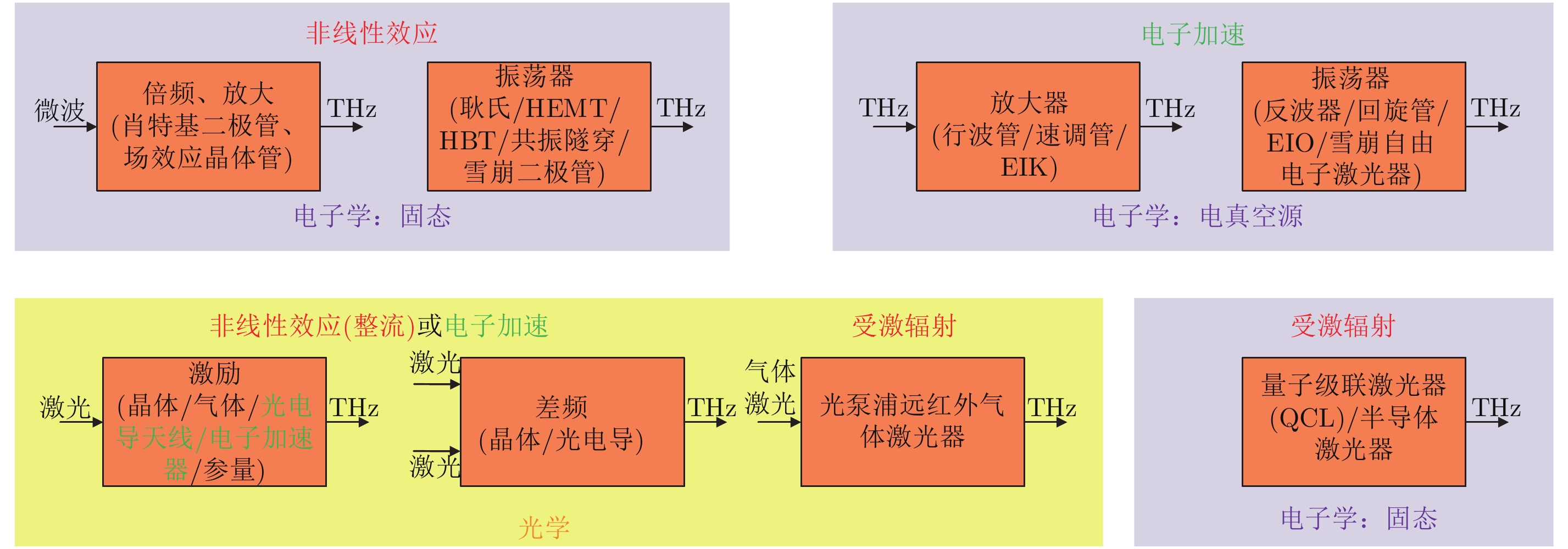



 DownLoad:
DownLoad:
